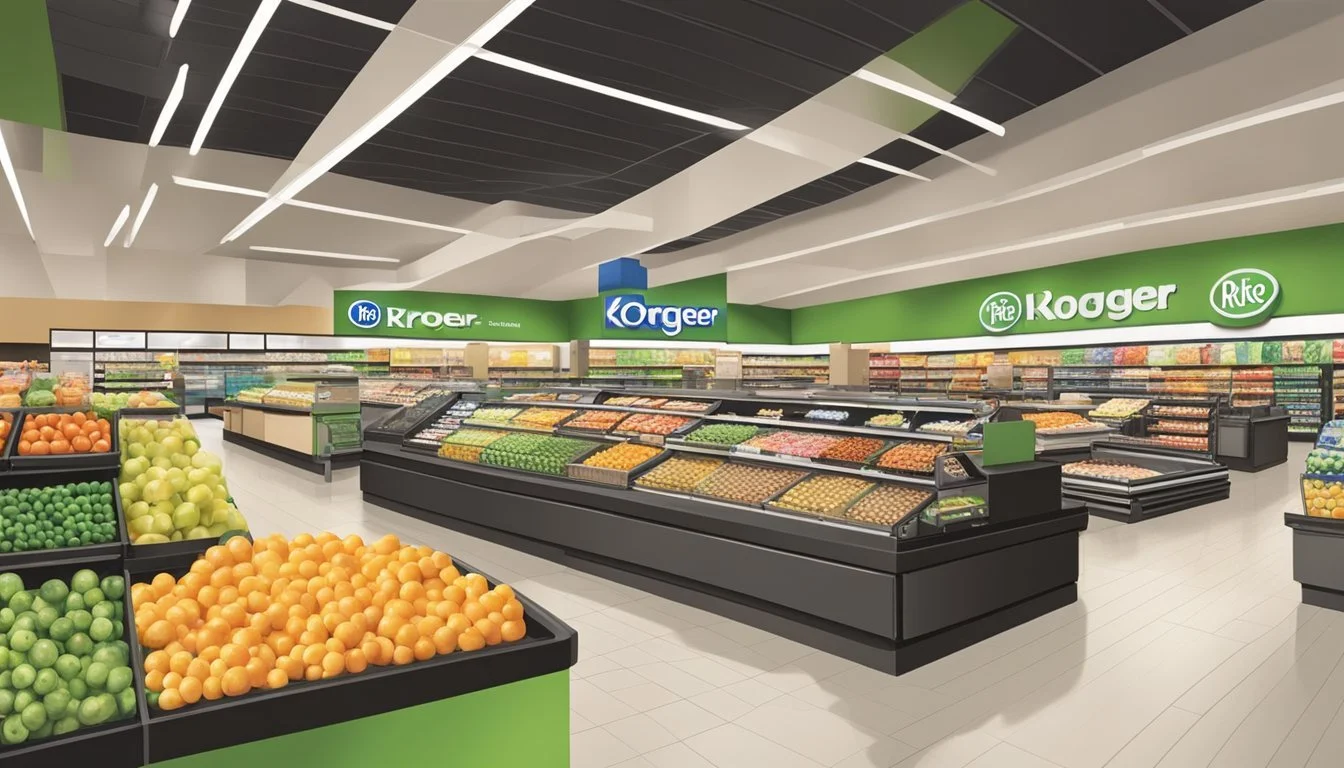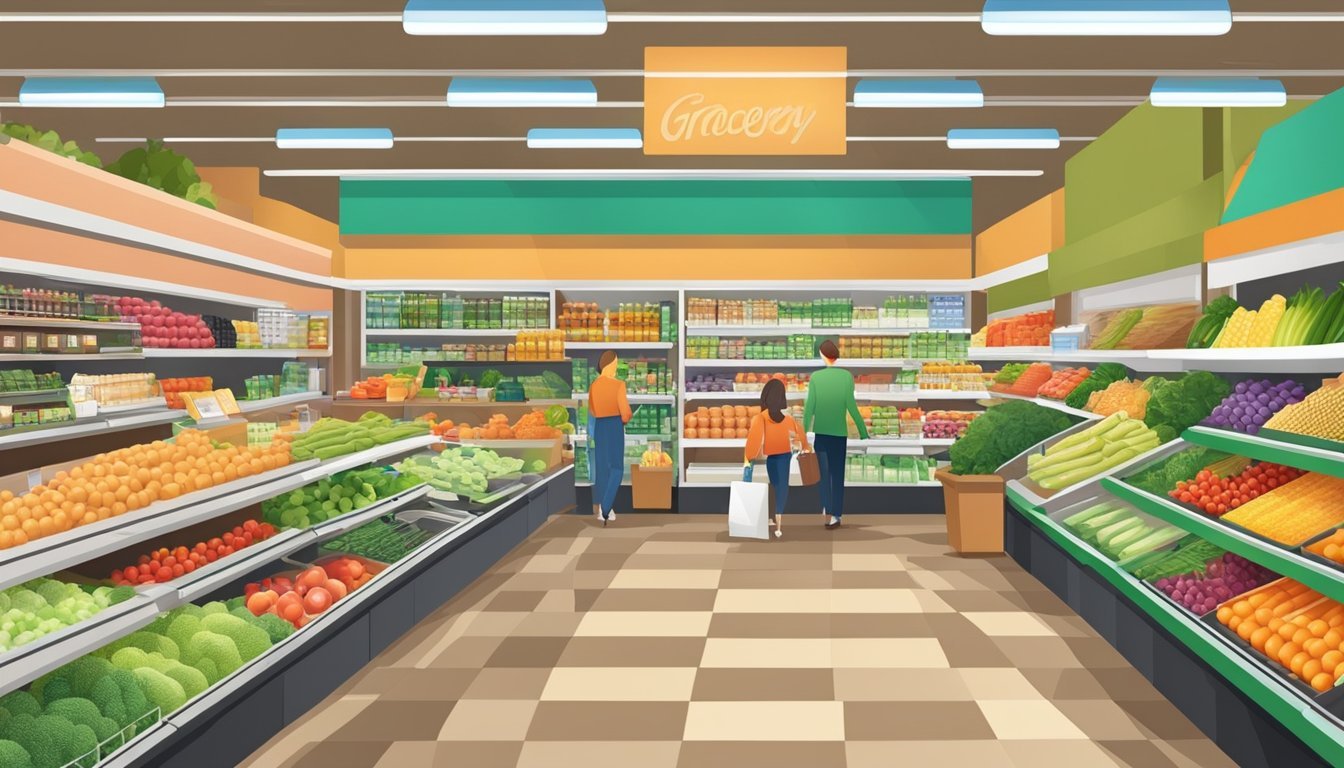Kroger vs Publix
A Comprehensive Comparison of Grocery Store Giants
When it comes to choosing a grocery store, shoppers often weigh a variety of factors from pricing to product selection. Two of the most recognizable grocery store chains in the United States are Kroger and Publix. Each of these stores has developed a loyal customer base and has its own set of strengths that appeal to different consumer preferences.
Kroger, recognized as the largest supermarket chain in the country, is well known for its budget-friendly prices, especially for store-brand items. On average, customers can expect to find prices at Kroger ranging from 10% to 50% cheaper than Publix for most store brand products. This makes Kroger a compelling choice for shoppers prioritizing cost savings, as the chain often offers the best price in several common shopping categories.
Publix, on the other hand, has established a reputation for a high level of customer service, clean stores, and a wide selection of quality products, including its own popular store-brand items. While Publix may have higher prices on average compared to Kroger, some shoppers may find the added value in Publix's shopping experience to be worth the extra cost. The decision between Kroger and Publix often comes down to what the consumer values more: overall lower prices or a potentially higher-end shopping environment.
Company Overview
Kroger and Publix are two of the most recognizable supermarket chains in the United States, each with their own history, business models, and market presence that contribute to their respective positions in the grocery industry.
History and Presence
Kroger, with a history dating back to 1883, is headquartered in Cincinnati, Ohio, and has grown into the country's largest supermarket by revenue and the second-largest retailer after Walmart. It operates in numerous states with a significant presence in cities like Phoenix, Arizona.
Publix, founded in 1930, is based in Lakeland, Florida. It is the largest employee-owned grocery chain in the United States. Publix primarily operates in the southeastern region, with a notable presence in Atlanta and across Florida.
Business Models
Kroger's business model focuses on a diverse offering that includes supermarkets, multi-department stores, Marketplace stores, and Price Impact warehouses. This variety allows it to reach different customer segments across the United States.
Publix emphasizes creating a customer-focused shopping experience with a strong emphasis on service quality. Publix stores are well-known for their clean environments and extensive store brand offerings.
Unique Selling Propositions
Kroger touts a robust selection of organic and store brand products, positioning itself as a one-stop-shop for a wide demographic, competing with the likes of Walmart and Target.
Publix shines through with its reputation for excellent customer service and high-quality store brand offerings, which differentiates it from competitors including ALDI and regional chains.
Market Share and Growth
In terms of market share, Kroger commands a substantial portion of the market across the United States, with a consistent record of growth reflected in its annual revenue.
Publix has a prominent market share in the southeastern region, on a steady trajectory of growth due to both organic expansion and opening new stores, often surpassing local competitors in popularity.
Corporate Social Responsibility
Both Kroger and Publix engage in Corporate Social Responsibility (CSR) initiatives. Kroger has a long-standing commitment to community engagement, sustainability, and feeding the hungry through its Zero Hunger | Zero Waste plan.
Publix demonstrates its CSR through philanthropy, sustainability, and initiatives like Publix Super Markets Charities, which supports nonprofits in the areas of youth, education, reducing hunger, and alleviating homelessness in the United States.
Product Offerings
When comparing Kroger and Publix, a detailed look at their product offerings reveals significant differences in quality, variety, and the range of products available, including store brands and organic items.
Quality of Products
Kroger and Publix both offer a wide array of high-quality goods. Kroger's focus on quality is evident in its fresh produce and meats, which customers consistently rate highly. Similarly, Publix is renowned for its fresh produce and premium meats, ensuring customers have access to quality ingredients.
Variety and Availability
Kroger boasts over twice the product selection compared to Publix, giving shoppers an extensive variety of staples and specialty foods to choose from. Publix, while having a smaller selection, carefully curates its product offerings to meet the specific preferences and needs of its customer base.
Store Brands vs. National Brands
Both stores offer their own store brands—Kroger Brand and Publix Brand—which are priced competitively against national brands. Kroger is especially known for offering a fair range of alternatives in staples like dairy and bakery through its store brand.
Kroger Brand: Known for a variety of staples at a lower cost.
Publix Brand: Offers a fair selection of quality store brand options.
Specialized Departments
Customers at both Kroger and Publix benefit from specialized departments such as deli, cheese, bakery, floral, and sushi (What wine goes well with sushi?). Kroger often has an extensive array of cheeses and a convenient sushi counter. Publix emphasizes its bakery and deli, featuring an assortment of made-to-order options.
Non-Food Items
The range of non-food items like drugs and household goods also varies between the two stores. Kroger has a comprehensive drug and household department, typically offering a wider selection of items compared to Publix.
Organic and Health-Focused Options
Both grocery stores have responded to the growing demand for organic and health-focused products. Publix offers a varied selection of organic vegetables and proteins, including gluten-free options. Kroger has a similar commitment to organic and healthy offerings, often at a more competitive price point than Publix.
Locations and Accessibility
When shoppers choose a grocery store, the considerations of store location and the ease of shopping are paramount. These factors significantly influence the overall shopping experience, whether in-store or online.
Geographical Footprint
Kroger has a wide-reaching geographical footprint, operating in numerous states across the country. It is particularly prominent in the South and Midwest. Publix is more concentrated in the Southeast, with a stronghold in states like Florida, Georgia, South Carolina, and Alabama.
Kroger: Present in 35 states, including Virginia and Arizona.
Publix: Found primarily in the Southeastern United States, concentrated in states such as Georgia (GA), South Carolina (SC), and Alabama (AL).
Store Layout and Design
The layout and design of Kroger stores often vary by location, but they generally focus on offering a comprehensive shopping experience with distinct sections for fresh produce, bakery, deli, and meats. Publix stores emphasize an accessible layout, with wide aisles and well-organized shelves, aimed at a convenient and pleasant shopping experience.
Kroger: Spacious designs in multiple formats, including the marketplace stores with a range of home and garden products.
Publix: Consistently user-friendly layouts focused on shopper convenience.
Online and Delivery Services
Both Kroger and Publix have invested in online shopping platforms, recognizing the shift towards digital convenience. Kroger has its own app and partners with external services for delivery. Publix offers robust online services as well, including delivery via partnerships and curbside pickup.
Kroger: Offers online ordering through their app and website, with delivery affiliations including partnerships similar to Amazon.
Publix: Provides an online portal for shopping, with delivery options that ensure a competitive convenience factor.
Pricing and Affordability
When comparing Kroger and Publix on pricing and affordability, shoppers will find significant differences in everyday prices, discounts, and loyalty programs, influencing the overall cost of grocery shopping.
Everyday Prices and Discounts
Kroger frequently offers competitive prices on a wide range of products. They are known to be cheaper than Publix, with savings ranging from 10% to 50% on store brand items. Shoppers can find the best price for a majority of shopping categories at Kroger, making it a preferred destination for budget-conscious customers. In contrast, Publix's prices are usually higher, although they provide a quality shopping experience that some customers may find justifies the extra cost.
Comparative Price Analysis
Based on various shopper reports and price tracking from sources like Clark.com, Kroger tends to be more affordable across the board. For example, a comparison showed that a shopper's grocery cart totaled $37.94 at Kroger with a savings card as opposed to $53.84 at Publix. Additionally, Kroger consistently outperforms Publix in price analysis across categories except occasionally in specific items, such as eggs, where Publix may offer better value.
Rewards and Loyalty Programs
Both Kroger and Publix offer rewards and loyalty programs to enhance savings for their customers. Kroger's loyalty program is notably beneficial, providing discounts, digital coupons, and fuel points. Customers can access these deals via Kroger's app, making savings readily available. Publix also has its savings program and digital coupons, but the impact on overall prices seems less significant when compared with Kroger's comprehensive reward strategies.
Cost of Shopping
The total cost of shopping at Kroger vs Publix can vary significantly. Shopper reports suggest that Kroger provides a more cost-effective shopping experience. It is important to note that while Kroger is viewed as less expensive, Publix is highly regarded for its customer service and shopping experience. For consumers looking to save money, discount grocers like Walmart and Aldi might also be considered in the mix, but Kroger remains a strong contender for budget-friendly shopping without compromising on variety.
Customer Experience
When comparing Kroger and Publix, it's crucial to examine various aspects of customer experience, which covers everything from the quality of service to store accessibility.
Service and Support
At Kroger, customer service is made a priority with a wide variety of support options including online help centers and responsive in-store staff. Publix has a reputation for exceptional customer service as well, often having friendly employees who go above and beyond to assist shoppers.
Brand Loyalty
Rewards programs are essential in fostering brand loyalty. Kroger offers the Kroger Plus Card, which provides customers with savings on groceries and fuel, while Publix promotes a similar sentiment with its Club Publix program, personalizing deals and discounts to the shopping preferences of its customers.
Community Engagement
Both Kroger and Publix are known for their community involvement. Kroger has a Zero Hunger Zero Waste commitment, focusing on ending hunger and food waste. Publix similarly engages with local communities, especially through its Publix Charities, which donates to various causes.
Accessibility Services
Convenience and accessibility services are key customer considerations. Kroger and Publix both offer features like online shopping and home delivery. However, some customers have noted that Publix sometimes edges out with more convenient parking and store accessibility.
In-Store Experience
The in-store experience can greatly influence customer satisfaction. Shoppers often cite Publix for its clean and well-organized stores, contributing to a pleasant ambiance. Kroger stores also offer a clean environment with a comprehensive layout, but some reviews mention inconsistency among different locations.
Comparison and Analysis
In assessing Kroger and Publix, key metrics such as price, customer service, product selection, store layout, and reward programs are considered to deduce the strengths and weaknesses of each. Insights from consumer reports, reviews, and expert opinions culminate in an informed final verdict.
Strengths and Weaknesses
Kroger:
Price: Frequently offers lower prices on a range of items and boasts impressive savings with its rewards card.
Selection and Variety: Showcases a broad selection across various categories.
Rewards: Operates a robust rewards program that benefits frequent shoppers.
Store Layout: Stores may vary but generally are designed for convenience.
Publix:
Customer Service: Acknowledged for superior customer service.
Cleanliness: Often recognized for its clean store environments.
Price: Tends to be higher in price but offers value on select items like eggs.
Selection and Variety: A commendable variety, though sometimes less diverse than Kroger.
Consumer Reports and Reviews
Consumers generally find Kroger to offer a more economical shopping experience, with lower prices on most store brand items. Publix, on the other hand, is often lauded for creating a positive shopping experience, prioritizing customer service and maintaining a clean atmosphere. Reviews from sites like Clark.com and feedback from individuals, such as Michael Timmermann, suggest that Kroger typically has the edge in pricing but Publix may win in the customer service and cleanliness categories.
Expert Opinions
Industry experts assert that Kroger presents the best price in the majority of shopping categories, bolstering its position as a cost-effective choice for consumers. According to analysts, it outperforms Publix in affordability but may lag in other qualitative measures like store aesthetics and service. Publix's strong suits in customer engagement and shop environment are frequently praised by expert commentators.
Final Verdict
In the contest between Kroger and Publix, no clear-cut winner is declared as the better choice varies by individual consumer preferences. For those prioritizing price and variety, Kroger is often recommended. For shoppers valuing customer service, cleanliness, and a potentially preferred shopping experience, Publix may be the recommended choice. Each store has carved out its niche, appealing to different aspects of the grocery shopping experience.
Conclusion
When comparing Kroger and Publix, price seems to be a decisive factor with Kroger often emerging as the more cost-effective choice. Kroger's store brand items are generally priced lower than Publix by a notable margin, making it an attractive option for budget-conscious shoppers.
Publix, while often associated with higher prices, is also known for excellent customer service and store cleanliness. For some consumers, these factors may justify the additional cost.
In terms of product selection, both stores offer a wide variety, but Kroger may have an edge in terms of organic and natural food options. Furthermore, Kroger's loyalty program and frequent sales promotions can enhance savings for regular shoppers.
On the other hand, Publix is praised for the quality of its store-brand products and consumers loyal to the brand find value in their consistent taste and quality.
Kroger:
Lower prices on store brands
Larger organic selection
Beneficial loyalty program
Publix:
High customer service standards
Quality store-brand offerings
Clean store environments
Ultimately, the choice between Kroger and Publix may come down to individual priorities such as cost, shopping experience, and product quality. Both have their strengths, and shoppers may choose one over the other based on their specific needs and preferences.





